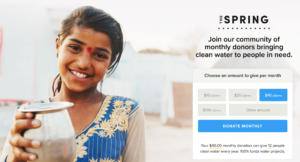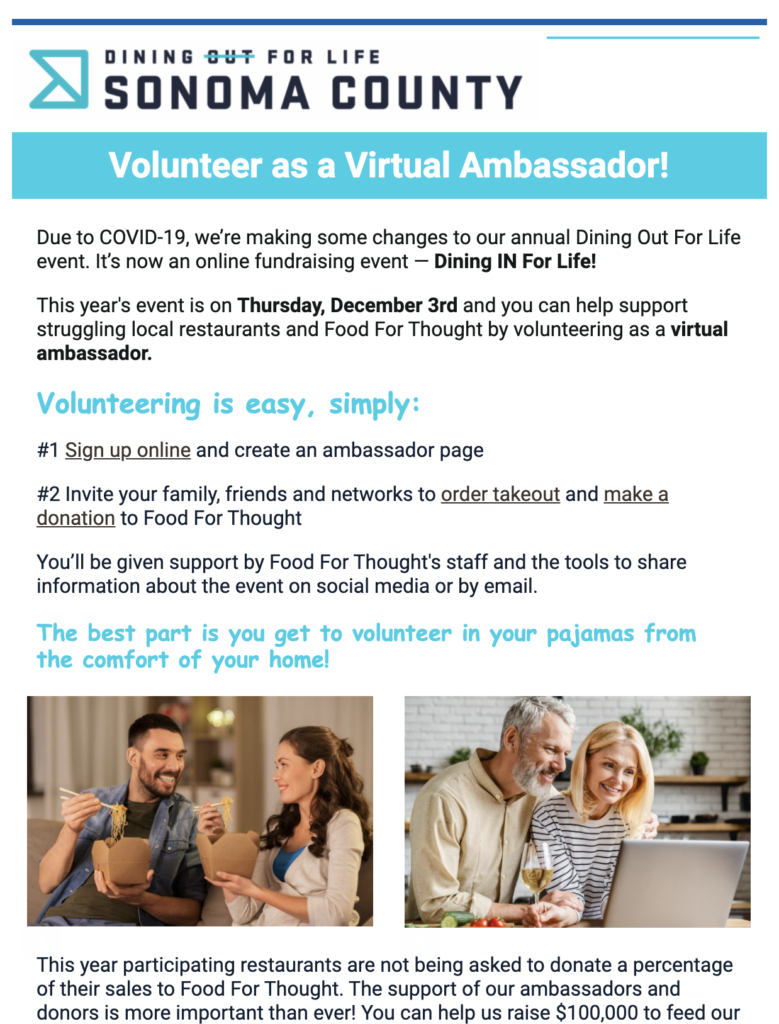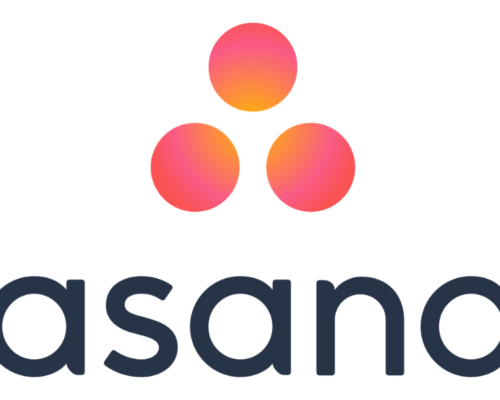2021 Year-End Appeal Guide
The end-of-year giving season always seems near. Have you made a plan for your year-end appeal?
30% of all giving happens in the last month of the year! Chances are high that at the end of this year, people will once again reach deep into their pockets to support the nonprofits they love. What we’ve learned from years past is that, especially during hardship, people want to give back. This year should be no different.
The giving season is kicked off by GivingTuesday, and regardless of whether you’re participating, you should be considering a plan for your big year-end fundraising push. Read on for our guide for creating a successful year-end fundraising appeal—complete with do’s and don’ts, best practices, strategic tips, and fundraising inspiration.
part 1: Crafting Your Appeal
To get started, it’s helpful to begin by splitting your plan up into the classic components: “what”, “why”, “how”, “when”, and “where”.
What – the goal
The first step is to set a goal. This is your “what”.
Be specific about what you’re raising funds for and the impact it will make. You will need to determine what you want to fundraise for. Is there a program or project that you want to get off the ground and need to raise some funds for? If you are unsure what you want to fundraise for, start by thinking about what your nonprofit’s mission is and what your long-term goals are. Then begin to break them down into pieces and see what small part you can tackle with this fundraiser.
Be realistic and set an attainable dollar amount. How much have you raised in a similar campaign in the past? This is a good place to start. Your goals should be SMART (Specific, Measurable, Ambitious/Attainable, and Time-based).
Do get your team on the same page and set a reach goal internally. This way, if your team is working towards a higher number, it will add momentum to keep your team motivated.
Don’t get carried away with an unrealistic goal. Make sure your goals are within reach. It’s more important to meet your goal and share success than to be ambitious. You can always adjust the goal higher later if you reach it too quickly!
Inspiration: The African Wildlife Foundation does a great job of articulating urgency in both its appeal language and its CTA.
Why – THE STORY
If your goal is your “what,” your story is your “why”. Why did you set the above goal? Why should people contribute toward your goal?
While you want to include the program’s metrics and efficacy, you’ll also want the central piece to relate to a real story from your community.
- Connect with your program staff and volunteers to help you find a story from your community you can share.
- Here’s a rundown on the 5 elements that craft a compelling story for nonprofits.
- Consider including these important words in your appeals.
Do include visuals and a video. It’s cheaper to do than you might think, and stats show that your appeal will be 50% more likely to succeed if you do!
Don’t make these storytelling mistakes.
Inspiration: The Opportunity House shows us how it’s done with their powerful and compelling video and story from the community.
How – the call-to-action
So now that we understand the need, the problem, and why you’re asking – how can we help contribute toward your goal?
Make your call-to-action (CTA) clear and distinct, and have your action button reflect that. The more specific your call-to-action button can be, the greater the chances of someone saying “yes” to making their contribution. Here’s how to write a CTA that inspires engagement.
Do include an action (verb) + urgency, such as “Donate Now” or “Support Today”
Don’t be vague. Those stats you used earlier? This is a great time to use them to relate what impact each dollar has. If $10 buys school lunch for a week, customize one of your preset giving levels to be $10.
Inspiration: Charity:Water does an excellent job explaining exactly what $40/month can do and making that the default giving level on their The Spring campaign.
When – the timeline
Come up with your campaign timeline. This is the “when” for your organization’s planning. Here is an example of a year-end appeal preparation and marketing timeline:
8 weeks ahead:
-
- Prepare direct mailers.
- Identify corporate sponsors, grant matches, social media advocates, and peer-to-peer (P2P) advocates.
- Prepare email blast/newsletter copy.
6-7 weeks ahead:
-
- Create visuals, designs, and campaign videos.
- Email blast to re-engage donors and remind them of your mission and ask for contributions.
5-6 weeks ahead:
-
- Direct mail goes out (remember to account for potential slowdowns with the U.S. Postal Service).
- Prepare social media content and schedule posts.
- Release profile photos & banner images, social feed photos, Facebook/Instagram story images/GIFS.
- Email blast with a story that highlights the impact and important work of your organization.
4-3 weeks ahead:
-
- Start promoting on social media two times a week.
- Email blast to remind donors to give before the end of the year. Don’t forget to remove those who have already given from this list.
2-1 weeks out:
-
- Promote on social media two to three times a week.
- Email blast with an update on your goal to generate excitement. Remind donors they still have time to give.
- Optional: send a second direct mailer to those who haven’t responded. Send hand-written thank you notes to major donors that have responded.
Week of fundraising deadline:
-
- Try to post on social media every day, if not more. Highlight your programs, volunteers, and impact.
- Email blast for a final ask for contributions to reach your goal or stretch goal.
- For giving days, events, or on the last day of your campaign—post every four hours, and consider going live. Generate excitement and highlight your progress in real-time.
1-2 weeks post-campaign:
-
- Continue to engage and personally thank your donors, welcome new donors, share impact reports and encourage recurring giving.
Do prepare for a mid-campaign slump with a period where donations will be matched to activate donors.
Don’t forget to promptly thank your donors. Donors who receive a personal thank-you within 48 hours are four times more likely to give again!
Inspiration: Here is a helpful visual collection of year-end appeal campaigns.
Where – the campaign landing page
Your campaign landing page is the central piece of your fundraiser; this is where the action happens!
This is the central point, and all of the other promotional materials (social media, direct mailers, email marketing, website call-to-actions) should all point to this same landing page. This is also where the above points of the “what” (goal), “why” (story), “how” (call-to-action), and “when” (timeline) come together to display the complete picture.
- Instead of using your general donation page or a basic PayPal button, you’ll want to use a tool that will be able to integrate all of these on a single landing page and one you can customize to your organization’s or appeal’s branding, such as Flipcause.
- Consider what you’ll want to add to your campaign background, what colors to use for buttons and progress meter, and what imagery to use – including your campaign banner image. If you’re not sure where to start, check out our post on where to find good free stock photos and free image editing tools you can use.
- Optimize the page to minimize friction. Keep the story and appeal part short and sweet, and make the call-to-action button(s) easy to find at the top and bottom of your main appeal and media. Reduce the number of clicks it takes to “convert” (make the donation) by removing all necessary questions and fields.
Do utilize free and easy design resources available.
Don’t make it too long or complicated to navigate.
Inspiration: The Flipcause Inspiration & Layout Gallery offers preset designs that can easily be replicated for you and customized with your organization’s branding.
Part 2: Sharing your year-end appeal
Now that you have your campaign landing page ready, it’s time to fundraise! This is also called marketing, but let’s call it what it really is – communication.
You should consider your communication strategy which is comprised of what marketing channels you’ll use, the posts you’ll make, and the timing at which they all synchronize.
For your year-end appeal especially, it’s wise to leverage an omnichannel approach. Don’t shy away from sending the same audience multiple asks throughout the holiday season, driving them to the same fundraiser. In fact, you should expect the first several communications to be inadvertently missed. It happens to the best of us! So the important messages will need a reminder, and getting the same message from across multiple channels is the best way to make sure your donors have multiple opportunities to participate and not risk missing out.
We recommend you use all of the standard marketing channels: your website, your email newsletter, your social media, and direct mail. But you can also get creative and go the route of paid advertising, flyers, holding local campaign kick-off presentations, or pitching the media!
your website
A common mistake is forgetting to feature your year-end fundraising appeal on your website!
It’s easy to lose sight of the fact that your website is also the primary marketing channel for your organization – but that’s exactly what it is! Suppose you’re emailing people and posting on social media to your main campaign landing page. In that case, your audience (and the audience with whom they might be sharing) may want to click off to explore your website to learn more about your organization. Don’t leave those potential donors at a dead end! Remind them where they can find the main appeal for the season by making it easier to come back to the central focus – your fundraising landing page.
We recommend adding a few touchpoints to make it as easy as possible for people to contribute to your year-end appeal:

- Add a link directly to your fundraiser from the main navigation menu of the website.
- Include a feature and call-to-action from within a section of your homepage.
- Add a floating button that persists across all pages of your website.
And in case you find yourself with a website that is hard to update in a timely and cost-effective manner, you might benefit from our free Website Package where we’ll update it and manage it for you, for free.
email newsletter
Email marketing continues to be king. In fact, if your nonprofit didn’t send out a newsletter about it, did it even happen? We’ve grown to expect to receive all important updates via email from the organizations we’ve subscribed to, so make sure this is not something you neglect.
- Make sure you’re using a dedicated email marketing service and not BCCing your list via a personal email account. There are many reasons for this, not least of which is it prevents your entire organization’s domain from being spam-blocked!
- Leverage people’s emotions, make it digestible, and follow these best practices when drafting your email.
- Your format and layout matters. Optimize your email to make it more likely to drive donations and avoid making common mistakes.
To really get the most out of your efforts, you will want to segment your audience for your year-end appeal. While this may sound overwhelming, segmentation can be much easier than you think. If you’ve never done this before, start by chunking out your list into past donors, current donors, and volunteers so that each recipient will feel like you know them and are talking directly to them. This will do wonders to amplify your impact!
direct mailer
While it’s true that a large portion of fundraising has moved online, direct mail can still have a place in your fundraising strategy, especially for specific audiences or campaigns. Here’s how to weave it into your modern fundraising approach:
Complement, Don’t Compete: Instead of viewing direct mailers as an alternative to online fundraising, see them as complementary. Your direct mail strategy should drive recipients online, where they can engage with videos, testimonials, or other digital content. Encourage them to visit your online donation page for ease and convenience. This blended approach can provide a multi-touch experience for your donors.
Personalize and Target: With the plethora of information available, donors expect personalization. Segment your donor list, and tailor your direct mail content to resonate with different groups. This can increase the chances of your mail being read and acted upon.
Crafting Your Appeal: As always, the heart of your message matters. Regardless of the medium, ensure your appeal is compelling, genuine, and aligned with your organization’s mission. Here are some great tips for writing your appeal letter.
Envelope Essentials: The first impression matters! Before your recipient reads your letter, they see the envelope. Familiarize yourself with envelope best practices (which might surprise you!) for what works and what could inadvertently get your letter tossed in the trash.
A/B Testing: The digital age has given us the ability to test and refine in real-time. Use this advantage to A/B test versions of your direct mailers. This can give insights into messaging, design, or even which call-to-action is more effective.
social media posts
You’ll want to designate someone on your team to manage the highly important task of social media for your year-end appeal. During the month of your campaign, strive for two posts a week. Remember, you’ll want to prepare your content and schedule your posts ahead before you’re in the thick of it. Consider creating image templates that are ready to plug-in with campaign stats and updates. And determine your voice per platform according to your target audience on each.
Share gratitude and reflect on the spirit of generosity and joy at the end of the year. Highlight engaging stories, heart-warming imagery, testimonials from your constituents, your amazing volunteers, and exciting progress updates. Two weeks before your campaign, focus on the goal and impact of your campaign. Get creative with visual content, and consider going live in the last week of your campaign. There are free tools you can use to schedule your posts ahead of time.
- Here are tips on how to leverage your social media.
- Key steps for social media engagement for nonprofits.
- GivingTuesday has released this kit for how to rally social media influencers.
Part 3: After your campaign
review your campaign
Run a post-mortem
So, how did your year-end appeal do? What went well? What could have gone better? When we finish projects at Flipcause, we like to run a final “post-mortem” meeting to reflect on our successes and take time to tease out our lessons, conclusions or takeaways. As we all know, those who don’t learn from history are doomed to repeat it!
Evaluate
Remember the measurable goals you set in the beginning? When it’s all over, evaluate your fundraising success. Did you meet your goal, and why? Analyze your data against previous years to uncover what strategies worked, and make notes looking ahead for next year. Measure your costs per dollar raised or return on investment (ROI). Note your average gift amounts. The Non-profit Council of Non-profits offers tools for organizational self-assessments.
Impact Report
A report doesn’t have to be a dry set of statistics. A well-crafted annual report can show your donors how their money is tangibly helping your organization to achieve your mission. It’s all about transparency and sharing your milestones and achievements of the year.
Whole Whale shares their pick of the best nonprofit annual report ideas.
thank your donors
One of the most important components of donor retention is thanking your donors! Donors that receive a personal thank-you within 48 hours are 4 times more likely to give again. Make sure you plan how you will thank your donors ahead of time. Here are best practices and donor thank you letter examples.
Use your evaluation along with your impact report and let every individual know what their part aggregated to! This feels amazing.
It never hurts to go above and beyond with handwritten signatures (yes, even for digital thank-yous), handwritten thank-you cards, and short personalized thank-you videos.
celebrate
You did it—you made it through another year! You pushed forward, you worked hard. Don’t forget to make time to let loose, celebrate, and reflect. Celebrate your wins and relish the heartwarming highlights of the impact you were able to make. And be sure to take some much-deserved time off to spend with your loved ones!






